Arms
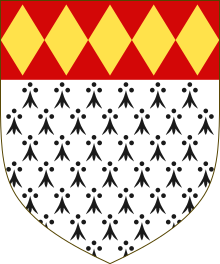 |
|
Nicholas Charles | |
|---|---|
| Died | 1613 |
Nicholas Charles or Carles (died 1613) was an English officer of arms, [1] who served as Lancaster Herald from 1609 to 1613. He made a copy of an early and rare 13th-century roll of arms, the original of which is now lost, known after him as "Charles's Roll".
Charles, according to Mark Noble, was the son of George Carles, a London butcher. At an early age he entered the College of Arms as Blanche Lyon Pursuivant; on 21 April 1609 he was created Lancaster Herald in the place of Francis Thynne. In 1611 he accompanied Richard St George, Norroy King of Arms, in his visitation of Derbyshire; and on 22 July 1613 William Camden, Clarenceux King of Arms nominated him his deputy for the visitation of Huntingdonshire. Charles had barely completed this task when he died on 19 November 1613. He was a friend of Camden and Sir Robert Cotton. Thomas Milles commended Charles in his Catalogue of Honour; and Edmund Howes, the continuator of John Stow's Chronicle, acknowledged his assistance. [1]
Camden is said to have purchased Charles's manuscript collection after his death for £90: items from it are now held in the College of Arms and the British Library. They include a collection of epitaphs in the churches of London and elsewhere, with drawings of monuments and arms (British Library, Lansdowne MS 874); and a catalogue of the officers of the College of Arms (Harley MS 5880). Richard Gough states that John Le Neve possessed a manuscript visitation of Staffordshire by Charles, and Sir John Cullum a visitation of Suffolk; but these documents appear to be lost. Charles's Huntingdonshire visitation is extant in three copies, and one, marked "C. 3 Huntingdon 1613" at the College of Arms, was edited for the Camden Society in 1849 by Sir Henry Ellis. [1]
Nicholas married Penelope, daughter of Sir William Segar, Garter King of Arms, who survived him. She subsequently married Timothy Cartwright of Great Washbourne, Gloucestershire. [1] By her second husband she was mother of the architect Thomas Cartwright. [2]
 |
|

Sir William Dugdale was an English antiquary and herald. As a scholar he was influential in the development of medieval history as an academic subject.
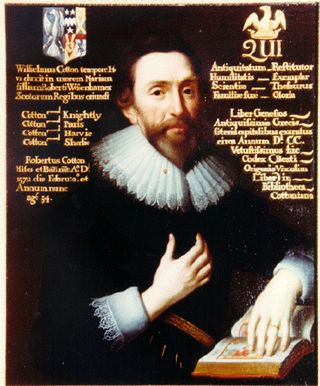
Sir Robert Bruce Cotton, 1st Baronet of Conington Hall in the parish of Conington in Huntingdonshire, England, was a Member of Parliament and an antiquarian who founded the Cotton library.
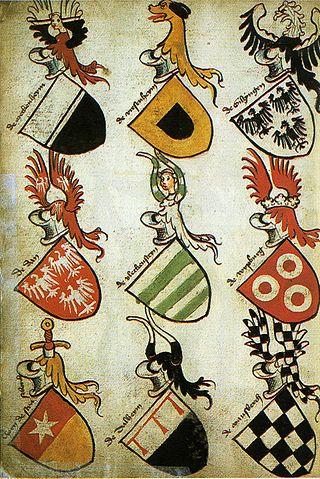
A roll of arms is a collection of coats of arms, usually consisting of rows of painted pictures of shields, each shield accompanied by the name of the person bearing the arms.

George Carew, 1st Earl of Totnes, known as Sir George Carew between 1586 and 1605 and as The Lord Carew between 1605 and 1626, served under Elizabeth I during the Tudor conquest of Ireland and was appointed President of Munster. He was an authority on heraldry and the author of Carew's Scroll of Arms 1588, Collected from Churches in Devonshire etc., with Additions from Joseph Holland's Collection of Arms 1579.
Sir William Coningsby was an English Member of Parliament and a Justice of the King's Bench.

Robert Abbot was an Anglican bishop, academic and polemical writer. He served as Master of Balliol College, Oxford, Regius Professor of Divinity, and Bishop of Salisbury from 1615. Among his four younger brothers, George became Archbishop of Canterbury and Maurice became Lord Mayor of London.

Heraldic visitations were tours of inspection undertaken by Kings of Arms throughout England, Wales and Ireland. Their purpose was to register and regulate the coats of arms of nobility, gentry and boroughs, and to record pedigrees. They took place from 1530 to 1688, and their records provide important source material for historians and genealogists.
Francis Thynne was an English antiquary and an officer of arms at the College of Arms.
Blanche Lyon Pursuivant of Arms in Ordinary was an English office of arms created during the reign of King Edward IV.

Sir Thomas Wriothesley was a long serving officer of arms at the College of Arms in London. He was the son of Garter King of Arms, John Writhe, and he succeeded his father in this office.
Henry Chitting was a long-serving officer of arms at the College of Arms in London.
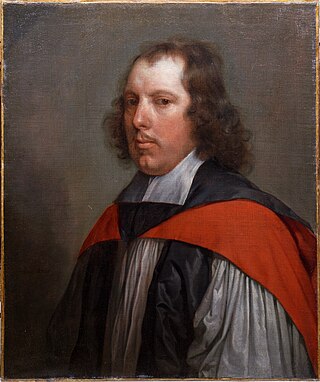
Thomas Cartwright (1634–1689) was an English bishop and diarist, known as a supporter of James II.
William Flower (1497/98–1588) was an English Officer of Arms in the reigns of Henry VIII, Edward VI, Mary I and Elizabeth I. He rose to the rank of Norroy King of Arms, serving in that capacity from 1562 until his death in 1588.

Robert Glover was an English Officer of Arms, genealogist and antiquarian in the reign of Elizabeth I. In the College of Arms, he rose to the rank of Somerset Herald of Arms, serving in that capacity from 1571 until his death in 1588. As marshal and deputy to his father-in-law, William Flower, Norroy King of Arms, he participated in heraldic visitations throughout northern England.

Robert Cooke was an English Officer of Arms during the reign of Elizabeth I, who rose swiftly through the ranks of the College of Arms to Clarenceux King of Arms, serving in that office from 1567 until his death in 1592–3.
Augustine Vincent was an English herald and antiquary. He became involved in an antiquarian dispute between his friend William Camden and Ralph Brooke.
Henry Ferrers was an English antiquary and MP.
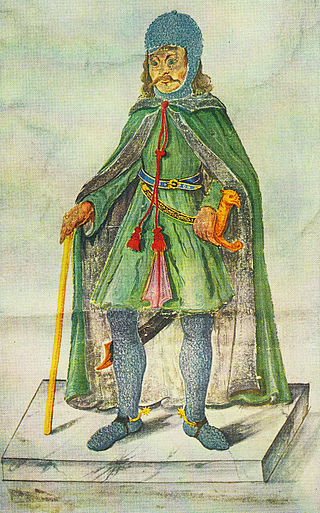
Sir William Le Neve (1600?–1661) was an English herald and genealogist.
The Camden Roll is a 13th-century English roll of arms believed to have been created c. 1280, containing 270 painted coats of arms with 185 French blazons for various English and European monarchs, lords and knights.
William Ryley was an officer of arms at the College of Arms in London.
![]() This article incorporates text from a publication now in the public domain : Stephen, Leslie, ed. (1887). "Charles, Nicholas". Dictionary of National Biography . Vol. 10. London: Smith, Elder & Co.
This article incorporates text from a publication now in the public domain : Stephen, Leslie, ed. (1887). "Charles, Nicholas". Dictionary of National Biography . Vol. 10. London: Smith, Elder & Co.